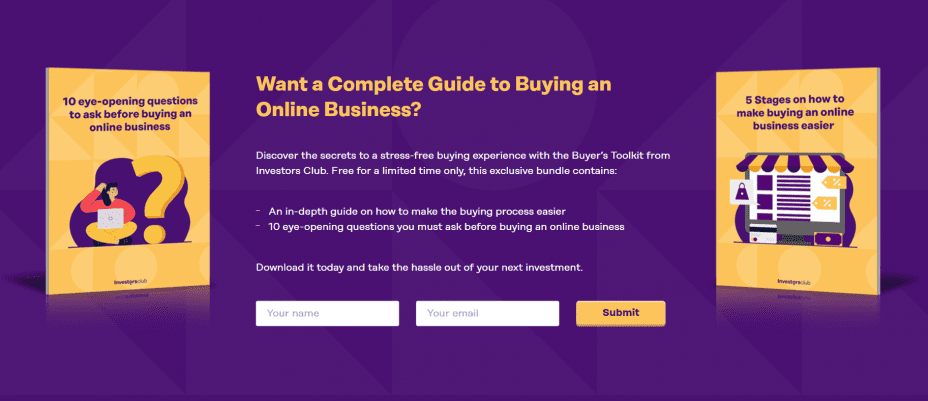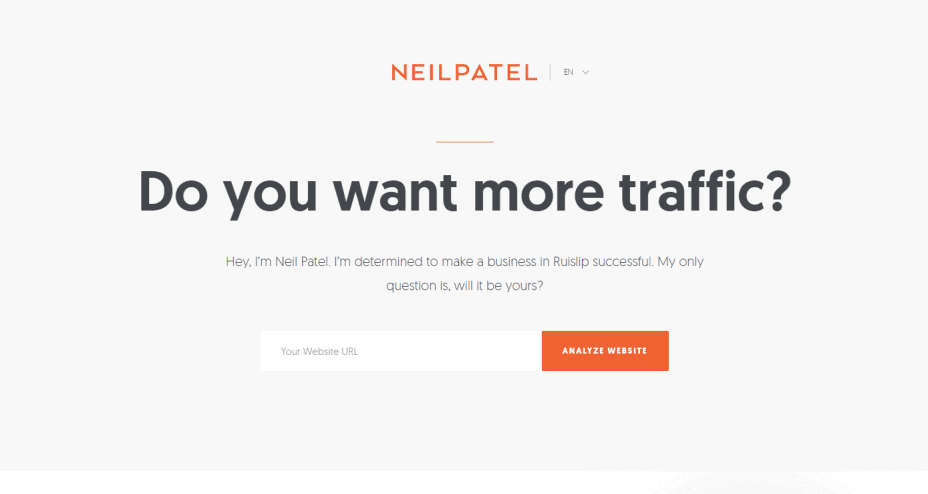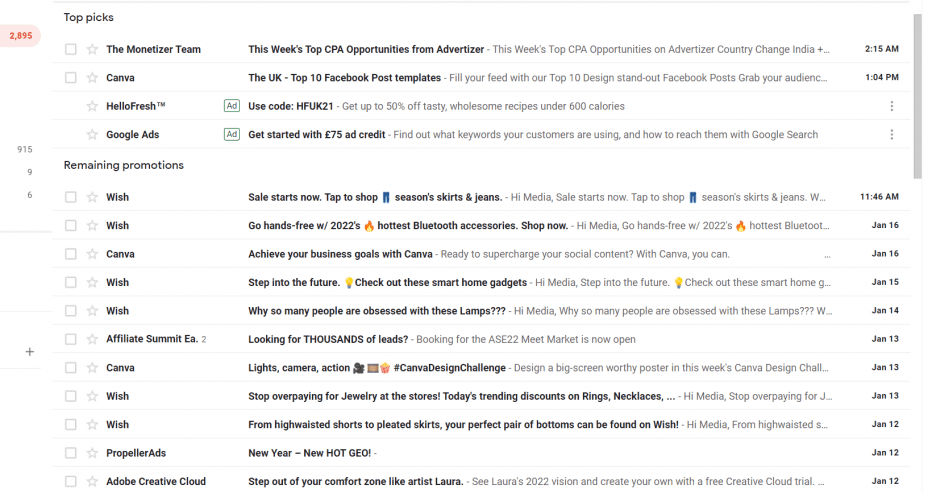News flash, email marketing isn’t dead. In fact, choosing to ignore this powerful marketing tool could see you missing out on a 3,800% ROI.
Yes, you read that right — 3,800%.
According to a report by HubSpot, email generates $38 for every $1 spent. Some even put it as high as $42. So whether you want to start a list, are looking to maintain the one you already have, or find new ways to monetize your emails, the time for action is now.
Here are 30 ways to boost the power of your email list, regardless of whether you’ve got one or one million followers.
Grow It
1. Make It Easy to Sign up and Hard to Ignore
The first and perhaps most obvious way to grow your email list is to make it easy to sign up. Place sign-up boxes and CTAs strategically around your website, and remember to A/B test opt-in forms for best results.
Locations could include:
- At checkout (for eCommerce sites) — even better if it signs customers up automatically unless they opt-out
- Via contact forms
- On social media profiles, such as Facebook pages
- A submission box at the bottom of blog posts
- Pop-ups activated after a specific time spent on a page (best when paired with some kind of offer/discount)
- In the right-hand margin
- Footers
- In the main menu bar
2. Incentivize It

You might write great emails, but there’s no tangible way to communicate that to people on your site. Give visitors a reason to sign up and make it hard to say no by offering a helpful lead magnet.
Examples include:
- Free templates
- eBooks
- Educational Courses
- White papers
- Infographics
- Webinars (live or prerecorded)
Choose one (or put together a bundle) most relevant to your niche and your audience. In the example above, WordStream, an online advertising company, offers a live webinar on ways to improve advertising results. It’s effective because it relates directly to the audiences’ interest and purpose for visiting the site.
For sites that sell products or services, a 10%+ discount is a good alternative if a lead magnet isn’t appropriate. Or go crazy and offer both!
3. Promote Said Incentive
Once you’ve settled on a lead magnet or other hook, promote it. However, be wary of sharing a pop-up too soon. If a new visitor lands on your site and doesn’t have time to discover if it’s right for them, they’re unlikely to respond positively to an immediate pop-up. Either have the lead-magnet as a fixed submission form or a pop-up that doesn’t stop the user from navigating the website, e.g., down the right-hand side. That way, they can come back to it as and when they’re ready to commit.
Exit-intent pop-ups can also be an effective way of doing some last-minute converting, resulting in 4-7% of site visitors signing up to an email list.
4. Don’t Overshare

Consider creating a series of (free) paywall content that requires an email to unlock. Options include posts where only the first few paragraphs are visible or restricting the number of articles a visitor has access to a month.
Don’t make it more complicated than it needs to be, though. Locking content that then requires a visitor to create a full account to access is unlikely to get results. Simply tease them with some great opening lines that make it clear it’s a piece worth reading, and then ask for an email address to continue.
5. Run Competitions/Giveaways
Running competitions or giveaways across your site and social media pages is another great way to grow your email list. All you need to do is develop an enticing prize, create an eye-catching graphic (Canva’s an excellent tool for this), and spread the word via posts or pop-ups.
Participants then submit their email to enter, and you’ve just got a new subscriber for your list. To boost this tip’s impact, offer participants additional entries for sharing with their family and friends.
6. Gamify the Sign-up

Add an element of fun (and a little gambling) into your sign-up process, and you’re on to a winner — especially if there’s the chance to win big. Gamifying the sign-up process detracts from what you’re doing — getting addresses — by focusing on what the visitor can gain — prizes! Not only will it get you more subscribers, but it also makes you appear more customer-centric, which is great for boosting customer loyalty.
7. Make It Shareable
If you already have an existing email list, make your email content more shareable. Articles, images, infographics, etc., should all be easily shareable via email and social media so your subscribers can help promote it for you. Don’t forget to brand your content, so anything shared online always links back to you.
8. Utilize the Power of Social Media

53.6% of the world’s population uses social media. As far as marketing tools go, it’s a pretty powerful one. So why not use it for advertising your informative/engaging/enter buzz-word-here newsletter? Someone who loves your social media posts might welcome more in-depth content via their inbox, giving you another subscriber.
9. Think Beyond Yes or No

Let’s face it pop-ups can be kind of annoying if done incorrectly. Now that they’re faced with them daily, many users don’t even read them anymore, they simply search for the big X so they can go about their business. This is why thinking beyond the simple yes/no answers to your pop-up questions is so important.
Take the pop-up above from Neil Patel’s website as an example of good practice. First of all, it’s not obtrusive, meaning you aren’t immediately driven to get rid of it. But more importantly, when you do respond, to opt-out, you have to click, “no, I have enough traffic.” In the history of the internet, no website owner has ever uttered those five words.
As a result, it makes you seriously stop and consider the offering. Those extra few seconds could be the difference between getting an email address and not.
10. Remember, Promises of 10x-ing an Email List Overnight are Rubbish
Building an email list isn’t a fast process but it does benefit from the snowball effect. Anything or anyone promising overnight results will charge you a lot of money for a lot of fake emails that get you nowhere. Use the first nine tips to hook people in and then the following tips to keep them from hitting that unsubscribe button and get them sharing it with friends.
Maintain It
11. Add Value & Create Engaging Content
If there’s one question to ask before publishing content of any kind, it’s this — does this add value? Sending out useful, engaging emails that add value to a reader is the best way to keep hold of your subscribers. Over time, it will help you boost your list as people start talking about this great newsletter they keep receiving.
12. Know Your Limits

The ideal length for a subject line is 41 characters. When it comes to creating emails, knowing your limits is vital if you want to boost your open rate. If you must go over 41 characters, place the key message or most persuasive text at the beginning, so it’s sure to be seen. The last thing you want is the best part of your subject line…
Wondering how that sentence finished? So is your reader, expect probably not enough to open the email if they’re busy. Stay within your limits to take the top spot in the receiver’s inbox.
Since we’re on the topic of limits, get to know the ins and outs of mobile layouts. More than half of emails are opened on a mobile device, and there’s nothing more annoying than a poorly formatted email on a small screen.
13. Create Discussions
Make readers feel like active participants in your emails rather than passive receivers. Invite replies or link to discussion boards/social media pages where readers can continue the conversation started in your email. This creates a sense of community, gets your subscribers engaged, and helps to grow your list.
14. Personalize It
No one likes receiving an automated email which is bad news as automation is a marketer’s strongest ally. The best way to avoid your emails reading like a mass send out is easy — personalize it. The process of personalizing will be slightly different depending on your software but usually involves inserting a merge field. Then instead of “hi customer”, it will be addressed to their first name, instantly boosting connection.
And, since you’re personalizing it, have the email come from someone within your organization too. It gives the email another personal touch and may encourage more replies/engagement if readers feel they’re communicating with an actual person.
15. Take Advantage of Analytics
Analytics will help you discover everything from your subject line’s success to the best time of day and best day of the week to send emails. Use the data to your advantage to optimize your email marketing efforts, A/B testing subject lines, layouts, etc., and always send it out when it will get the most eyes.
16. Nail Your Copywriting & Design
Your email marketing efforts should be an extension of your website content. While you can afford to be a little more casual in an email (depending on your niche), following the same style guides will help reinforce your brand and what readers expect from you.
Whether you choose to include images in your email is a personal choice but bear in mind too many, and you’re more likely to end up lost in the spam folder. Regardless, some clever formatting doesn’t go amiss. Break down the content with headers, spacers, and buttons, so readers aren’t faced with a wall of text upon opening.
A splash of color isn’t a bad idea either if it fits with your site’s theme.
17. Send Consistently, Not Persistently
A person’s inbox is a sacred space. Sending too many emails (especially promotional ones) is a sure-fire way to get yourself unsubscribed. A good rule to follow is for every 1 promotional email, send 3-4 engaging or informative emails that are purely aimed at adding value and not boosting profits. And, unless you specifically market it as a daily email, don’t send more than 1 or 2 a week — 1 if it’s a meaty email.
18. Brand It
Carry your branding across to your email through fonts, colors, logos, and layouts. Subscribers should be able to open an email and know exactly who it’s come from without looking at the address. If you include images that might get shared, add your site’s domain to the corner, so it’s always associated back with your brand.
19. Offer Alternatives to Unsubscribing
Even if you follow rule number 17 perfectly, the chances are you aren’t going to please everyone. Instead of just having a blanket unsubscribe button, give readers the option to adjust the frequency of emails instead. This means you won’t lose out on the people that like the content but can’t keep up with the number of emails coming in.
Suitable frequencies to offer are
- Once a week
- Once a fortnight (every 2 weeks)
- Monthly
- Quarterly (4 times a year)
You could also give people the option to opt-out of content topics they’re not interested in. Clothing brands catering to different ages or genders often do this, so you don’t receive irrelevant emails but it’s applicable across the majority of sites. Don’t forget to ask those who are intent on unsubscribing why to help influence your strategy going forward.
20. Handle Data Appropriately
You can tell a lot from a person’s email, and you don’t want it getting into the wrong hands. Aside from general privacy concerns, there’s also GDPR compliance to consider. Unless you want to face a hefty fine, data needs to be handled appropriately; most email software tools will take care of this for you.
One thing you can do is ensure that people aren’t signed up to the list without consent and that you never share their data with anyone.
Monetize It
21. Build Trust First, Sell Second
Email lists can be a powerful money-making tool, but only if you build trust first. Don’t use your first, second, or even third email to a new subscriber to promote/sell something. Establish trust and a sense of authority first so that when you do finally introduce something you want them to buy, they trust your recommendation.
22. Create Free Content That Advertises Paid Ones
If you offer paid content, such as eBooks or courses, consider using your email list to drive traffic to them. Creating free content that links into and advertises paid versions is a good way to convert customers. Consider offering the first lesson free or a lite version of the eBook to email subscribers so they can test it out.
23. Offer Exclusive Discounts to Subscribers
Use your email list to offer subscribers exclusive discounts, early access to sales, or free trials for your site. This is an excellent way to boost your sales and your subscriber count in one go. For content sites with existing email lists, this is a good way to diversify into and introduce an eCommerce offering too.
24. Add Affiliate Links
Affiliate links aren’t just for blog posts. If you’re sending out informational content via email, make external links affiliate where possible. This is an effective way of monetizing your list without having to sell anything yourself.
25. Promote Paid Membership/Upgrades
Use your email list to boost sign-ups for your paid memberships, software upgrades, etc. Demonstrate the features they’re missing out on or offer a free trial to entice readers and raise awareness.
26. Collaborate With Relevant Businesses To Offer Discounts
This tip works particularly well for content sites. Collaborate with businesses selling products/services relevant to your site and offer subscribers exclusive benefits. You could share a link that gives you and the reader $X when they sign up, or operate as an affiliate program, taking a cut for every new customer your drive to the website.
27. Share Published Content
An easy way to monetize an email list is simply to use it to promote published content — especially if your site uses display advertising or affiliate links. Send out a round-up of new posts or posts under a different theme each time and get more eyes on the page’s adverts.
28. Sell Ad Space or Accept Sponsored Email
Offering sponsored emails or selling ad space in newsletter publications is another good way to monetize your list. More than 20% of the total income for publishers’ advertising in the US comes from newsletters and email updates. If you’ve got 5,000+ subscribers, you can make money using this tip.
29. Ask For Donations
If you’re providing high-quality free content to your subscribers, look at setting up a Venmo or Patreon account for donations. Instead of making people pay, it gives them a chance to show gratitude for the content at a price point that suits their budget. Patreon is a popular option and can be set up as a subscription that gives the person access to additional content in return for a recurring donation.
30. Offer Paid Newsletter
If you can prove your worth, offering a paid newsletter is an excellent way to monetize your list. This tactic works particularly well for sites catered to professional topics/coaching and could consist of
- Insider news
- Round-ups of latest developments (time saver for fast-paced industries)
- Expert tips and coaching
- Premium content not shared on your site
Bonus
31. Segment
Regardless of what stage you’re at with your email list, segment your audience, so they receive the most relevant content at all times.
32. Keep your list fresh and remove inactive subscribers
If a subscriber hasn’t opened an email in the last 6 months, chances are this will have a negative impact on your open rates. They’re either no longer interested, or your email is landing in junk folders. Removing those subscribers from your list will help keep your list fresh with mostly active people, thus maintaining your sender reputation, and ultimately your inbox deliverability.

Content Marketing Specialist
Hannah is a content marketing specialist at Investors Club and a freelance copywriter. When she’s not busy behind the keyboard, you’ll find her baking her signature salted caramel brownies or trying to sink that elusive hole-in-one.
Connect with Hannah:
Linkedin

